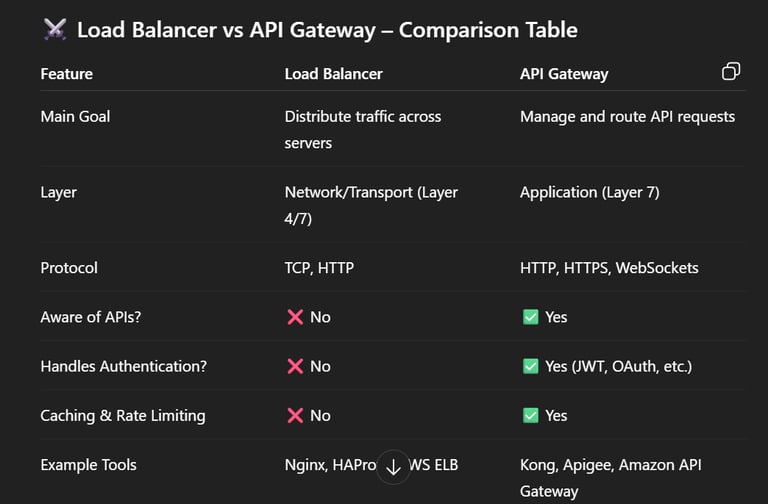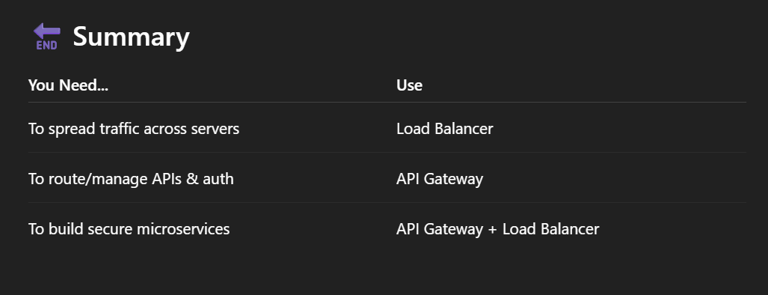Load Balancer vs API Gateway – What’s the Difference?
In modern web applications, Load Balancers and API Gateways are both used to manage incoming traffic, but they serve very different purposes. Let’s break it down using plain language and real-world analogies.
Vivek Rastogi
5/30/20251 min read
What is a Load Balancer?
A Load Balancer distributes incoming requests evenly across multiple servers so that no single server gets overloaded.
📦 Example:
Imagine you run a pizza shop with 3 delivery boys. Orders come in rapidly. The manager (load balancer) assigns each order to the next available boy so all deliveries go out on time.
💡 Key Purpose:
Distribute traffic across servers
Improve reliability and scalability
Provide failover (if one server is down, send traffic to others)
🔧 Used with:
Web servers (e.g., Nginx, HAProxy)
Application servers
Backend microservices
What is an API Gateway?
An API Gateway is the entry point for all client requests in a microservices-based architecture. It routes, transforms, validates, and manages those requests.
📦 Example:
Think of it like a receptionist at a corporate office. You arrive and ask for Sales. The receptionist tells you where to go, checks if you have an appointment, and maybe even logs your entry.
💡 Key Purpose:
Route requests to correct microservice (e.g., /orders → Order Service)
Handle authentication, rate limiting, and logging
Transform protocols (e.g., from REST to gRPC or GraphQL)
🔧 Used with:
Microservices (REST APIs)
Auth systems (JWT tokens, OAuth)
Rate-limiting, monitoring, caching



